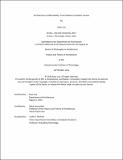Architectures of Microbiality: From Diatoms to Diatom Houses
Author(s)
Luo, Xuan
DownloadThesis PDF (12.97Mb)
Advisor
Jarzombek, Mark
Terms of use
Metadata
Show full item recordAbstract
This dissertation examines the diatom—a microorganism found ubiquitously from oceans to kitchen countertops—as a resonant factor in understanding modernity. From the early 19th century to the mid-20th century, rapid advances in optical microscopy dramatically unveiled the microbial world, during which diatoms, owing to their astonishing biological properties, forms, and material possibilities, became the subject of wonderment by a diverse group of naturalists, artists, and architects. I contend that microbial ubiquity constitutes a crucial but often overlooked aspect of environmental history, which architecture has consistently failed to account for.
The narrative progresses from early fascination with the diatom’s aesthetic potential to geologists’ more serious-minded efforts, laying the foundations for Richard Neutra’s (1892–1970) insistence that the diatom was critical to a new type of modern architecture. Through the case studies of Marquis Panciatichi d’Aragona (1813–1897) and Jacob Whitman Bailey (1811–1857), among others, I explore how diatom-influenced works from the 19th to early 20th centuries underpinned a transboundary dialogue on the microbial and its architectural imaginations. This perusal historicizes the theoretical and technological conditions that made possible the emergence of modernist views of nature, epitomized by Neutra’s philosophy on environmental psychology and realism through his early 20th-century proposal to integrate diatoms into the very fabric of modern living spaces.
This dissertation examines diatoms within shifting epistemological frameworks, tracking their transition from scientific specimens to motifs in visual culture. It investigates how unseen natural elements were disseminated, accumulated, and manifested into distinctly perceivable forms, revealing that the understanding of diatoms expanded from isolated, object-focused studies to a concern for environmental relationships and geological transitions. Filling the world was not some grand narrative of human will but the disorienting, puzzling, and even frightful everywhere-ness of microbiality. The intersection of diatoms with architecture changed from aesthetics and form to a deeper engagement with sites and land, following the transformative reconception of the thickness of the earth’s surface. This dissertation reveals a condition of knowledge that architecturally and psychologically rewrote nature as an encounter of biological (un)consciousness and technological actualization.
Date issued
2024-09Department
Massachusetts Institute of Technology. Department of ArchitecturePublisher
Massachusetts Institute of Technology